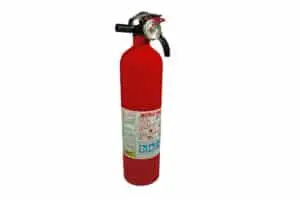
There are many classes of fires classified on the basis of. Technical specifications are subject to change with time due to our continuous product improvisation initiatives. The ABC fire extinguisher is the most important device that is used to control a fire breakout.
#Abcd fire extinguishers portable
Nomenclature For Portable Fire Extinguisher

And stringent quality control and multiple point testing systems ensure that when you are faced with a fire, these extinguishers will deliver.Ĭeasefire’s ABC Powder portable range of extinguishers come in 2Kg, 4Kg, 6Kg, 9kg size variants and are Stored-pressure type extinguishers, in Mild steel container bodies. Dry Chemical (ABC, BC and DC) Extinguishers DC short for dry chem ABC indicating that they are designed to extinguish class A, B, and C fires BC. Dry Chemical Powder (ABC Class) are mono ammonium phosphate-based powders that are generally for multipurpose use on Class A, B and C fires. A simple two-step activation mechanism allows you to fight the fire within seconds. MAP50 and MAP90 concentrations of Mono Ammonium Phosphate maximizes the fire fighting power available to you. They take the guesswork and confusion out of choosing an extinguisher and save valuable time in the face of the fatally dangerous enemy called fire.Ĭeasefire’s ABC extinguishers are built for speed, power and reliability. Mono Ammonium Phosphate paired with a simple, controllable discharge mechanism and stored pressure technology maximises the firefighting power and puts out the fire within seconds.Ĭeasefire’s ABC extinguishers are effective against Class A, B and C fires as well as Electrical fires. ABC dry chemical powder fire extinguishers are suitable for use on Class A (ordinary solids), Class B fires (flammable liquids) and Class C (gas and vapors).

An extinguisher with an ABC rating is suitable for use with fires involving ordinary combustibles, flammable liquids. Extinguishers that have attained A ratings but lack B, C, or K ratings are limited to ordinary combustible fires and should not be used to fight liquid. A carbon dioxide fire extinguisher can be used on Class B and C fires. An air-pressurized water (APW) fire extinguisher can be used on Class A fires only. Fire Extinguisher Service & Installation Fire Hose Reel Service & Installation Fire Hydrant System Fabrications Fire Suppression System Home Fire Protection. For example, an extinguisher with a BC rating is suitable for use with fires involving flammable liquids and energized electrical equipment. The multi-purpose dry chemical fire extinguisher is the most common type of portable fire extinguisher for work and home use. Comes with 1 year Period of Time and one time use and need to refill after single. For example, an extinguisher that is rated 4A:20B:C indicates the following. While many fire extinguishers are labeled for "ABC" fires, you may want to make sure a "K" class fire is covered by your unit if you like cooking with fat.In environments such as schools, offices, hospitals & factories, the Ceasefire ABC Powder extinguisher is your safest bet. Most portable extinguishers are rated for use with more than one classification of fire. These numerical ratings allow you to compare the relative extinguishing effectiveness of various fire extinguishers. Operation is similar to ABC, Halon, and Carbon Dioxide extinguishers. The dry powder extinguishers are mounted on two wheel carts.

Extinguishment is achieved by isolating and smothering the fire with either a copper or sodium chloride based powder. Your fire extinguisher will be labeled with the type of fires it is designed to put out. Operation is similar to the ABC extinguisher. Class D fire extinguisher specialist dry powder. Class C fire extinguisher water mist, dry powder. Class B fire extinguisher water mist, foam, dry powder, CO2, some wet chemical. Fires are divided into "classes." These groupings are based on what causes the fire.Ĭlass A fires: These are fires caused by common materials like wood and paper.Ĭlass B fires: This type of fire is associated with combustible liquids, including kerosene and oil.Ĭlass C fires: These are electrical fires, and can be caused by faulty appliances or tools.Ĭlass D fires: This type of fire is related to metal, and is most likely to happen in a lab dealing with things like magnesium and titanium.Ĭlass K fires: These fires are related to vegetable oil and animal fats, so they may occur in a common kitchen. Class A fire extinguisher water, water mist, foam, dry powder, wet chemical. Other Methods: Fire blankets can deprive a small fire of oxygen. You also need to make sure the fire extinguisher you have can handle the type of fire you're most likely to experience. FIRE INDUSTRY LINKS NAFED - National Association of Fire Equipment Distributors NFPA - National Fire Protection Association Online Fire Extinguisher Training. Dry Chemicals: ABC fire extinguishers usually contain dry chemicals. What types of fires can extinguishers handle?


 0 kommentar(er)
0 kommentar(er)
